This post may contain affiliate links which means I may receive a commission for purchases made through links. Learn more on my Private Policy page.
Have you ever wondered about the latest technological advancements in farm machinery? Well, you’re in luck! This article will provide you with an overview of all the cutting-edge innovations that have revolutionized the agricultural industry. From autonomous tractors to precision irrigation systems, these advancements have not only increased efficiency but also improved the overall sustainability of farming practices. So, if you’re curious about how technology is reshaping the world of farming, keep reading to discover some of the exciting developments in farm machinery.
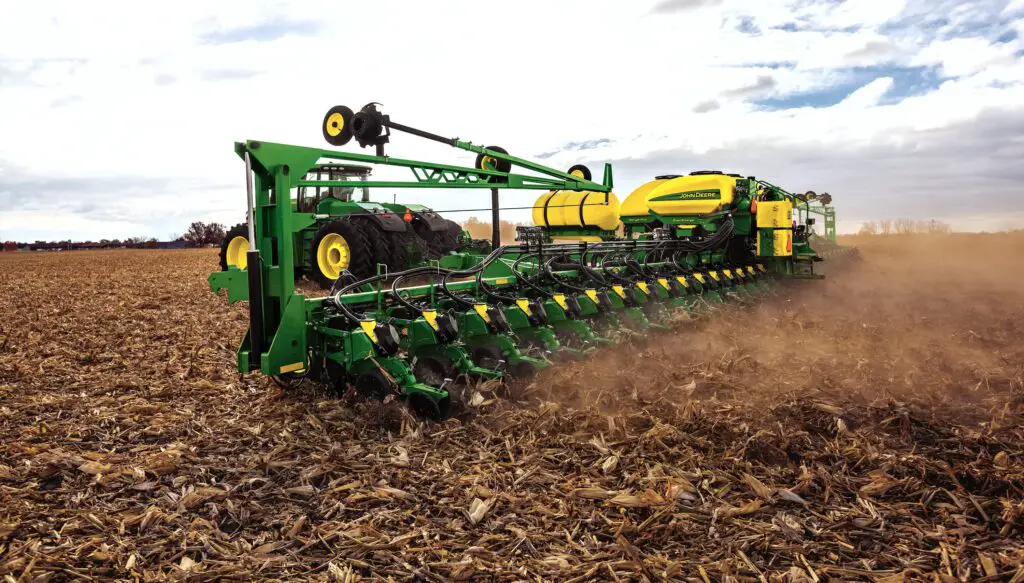
This image is property of media-cldnry.s-nbcnews.com.
1. GPS and precision agriculture
GPS technology has revolutionized the farming industry by providing accurate positioning and navigation capabilities for farm machinery. With GPS technology integrated into tractors, combines, and other agricultural equipment, farmers can precisely navigate their fields, ensuring that every inch of land is efficiently utilized. This technology allows for precision agriculture, which focuses on optimizing crop production by using data-driven decision-making.
1.1 GPS technology in farm machinery
The integration of GPS technology in farm machinery involves the use of satellite signals to accurately determine the position and movement of the equipment. GPS systems use a network of satellites orbiting the Earth to transmit signals that are received by GPS receivers installed in the farm machinery. These receivers then calculate the precise location of the machinery, providing farmers with real-time data on their equipment’s position.
1.2 Benefits of GPS technology in farming
GPS technology offers numerous benefits to farmers. Firstly, it enables accurate field mapping, allowing farmers to create precise digital maps of their fields. This information helps optimize the use of resources such as fertilizers, water, and pesticides by applying them only where they are needed. Additionally, GPS technology enhances the efficiency of farm operations by guiding machinery along predefined paths, reducing overlap and minimizing fuel consumption.
1.3 Precision agriculture and its impact on farm machinery
Precision agriculture, enabled by GPS technology, has significantly impacted farm machinery. With the help of GPS guidance systems, farmers can precisely control their machinery’s movements, resulting in improved efficiency and productivity. This technology allows farmers to achieve consistent and accurate planting, seeding, and application of inputs, leading to higher crop yields. Moreover, precision agriculture reduces manual labor requirements and enables farmers to monitor and manage their fields more effectively.
2. Autonomous and robotic systems
The advancement of autonomous and robotic systems has brought significant changes to the field of agriculture. These technologies aim to automate various farming activities, reducing the need for manual labor and increasing overall efficiency.
2.1 Introduction to autonomous and robotic farm machinery
Autonomous and robotic farm machinery refers to the use of self-driving and automated systems in agricultural operations. These machines can perform tasks such as planting, harvesting, and crop monitoring without human intervention. They are equipped with sensors, cameras, and advanced algorithms that allow them to navigate fields, identify crops, and carry out specific tasks with precision.
2.2 Advantages of autonomous and robotic systems
The use of autonomous and robotic systems in agriculture offers several advantages. Firstly, it reduces the reliance on manual labor, which can be expensive and time-consuming. Automated machinery can work around the clock, increasing productivity and reducing operational costs. Additionally, these systems can perform tasks with greater precision and accuracy, ensuring consistent crop quality and yield. Furthermore, autonomous machinery can access and operate in areas that are challenging or unsafe for humans, such as steep slopes or hazardous environments.
2.3 Examples of autonomous and robotic farm machinery
There are numerous examples of autonomous and robotic farm machinery being utilized in agriculture. Self-driving tractors are increasingly being used for tasks like plowing, tilling, and harvesting. These tractors are equipped with sophisticated GPS and sensor systems that enable them to navigate fields and perform tasks autonomously. Another example is the use of robotic harvesters, which can identify and pick ripe fruits or vegetables with minimal damage. These machines use machine vision technology, allowing them to analyze the color, shape, and texture of crops to determine ripeness.
3. Internet of Things (IoT) in agriculture
The Internet of Things (IoT) has made its way into the agricultural sector, bringing connectivity and data-driven solutions to farm machinery. By integrating IoT technology, farmers can collect real-time data from their equipment and make informed decisions to optimize their farming operations.
3.1 Integration of IoT in farm machinery
The integration of IoT in farm machinery involves connecting various agricultural devices, such as tractors, sensors, and drones, to a network. These devices collect and transmit data to a centralized system, allowing farmers to monitor and control their equipment remotely. IoT technology enables seamless communication between different components of a farming system, providing farmers with valuable insights and actionable information.
3.2 Benefits of using IoT in agriculture
Using IoT technology in agriculture offers several benefits. Firstly, it allows for real-time monitoring of crops, soil conditions, and weather patterns, enabling farmers to make timely decisions and adjustments. For example, farmers can receive alerts about irrigation needs, pest infestations, or adverse weather conditions and take appropriate actions promptly. Additionally, IoT systems can optimize the use of resources by providing data on soil moisture levels, nutrient requirements, and crop health, allowing farmers to apply inputs precisely where they are needed, reducing waste and increasing efficiency.
3.3 Applications of IoT in farm machinery
There are various applications of IoT in farm machinery. For instance, sensors installed in the soil can collect data on moisture levels, temperature, and nutrient content, helping farmers make informed irrigation and fertilization decisions. Drones equipped with sensors and cameras can capture high-resolution images of fields, providing real-time information on crop health, pest detection, and weed identification. Livestock monitoring systems integrated with IoT technology can track vital signs, feeding patterns, and behavior, enabling farmers to manage their livestock effectively.
4. Big data and analytics in farming
The use of big data and analytics in farming has immense potential to revolutionize the agricultural industry. By collecting and analyzing large volumes of data, farmers can gain valuable insights, identify trends, and optimize their farming practices.
4.1 Role of big data and analytics in agriculture
Big data and analytics play a significant role in agriculture by enabling data-driven decision-making. Farmers can collect vast amounts of data from various sources, such as sensors, weather stations, and satellite imagery. By analyzing this data, farmers can identify patterns, correlations, and anomalies, allowing them to make informed decisions regarding crop management, resource allocation, and yield optimization.
4.2 Collection and analysis of farming data
The collection and analysis of farming data involve the use of sensors, drones, satellite imagery, and other technologies to gather information about soil conditions, weather patterns, crop growth, and more. This data is then processed and analyzed using advanced algorithms and machine learning techniques to uncover meaningful insights. For example, by analyzing historical weather data and crop performance, farmers can predict optimal planting times and adjust their strategies accordingly.
4.3 Utilization of data analytics to optimize farming operations
Data analytics can be utilized in various ways to optimize farming operations. For instance, by analyzing crop performance data, farmers can identify factors contributing to high yields and replicate those practices across their fields. Additionally, data analytics can provide real-time insights on water usage, helping farmers optimize irrigation practices and conserve water. Moreover, by analyzing data on pest and disease outbreaks, farmers can implement targeted interventions, reducing the need for widespread pesticide use.
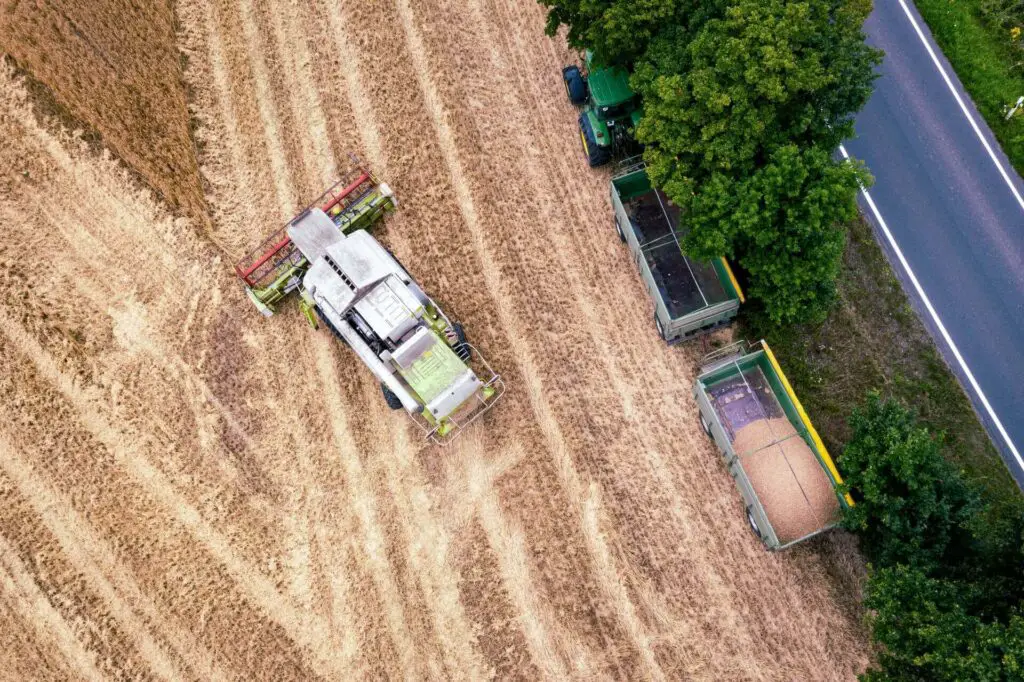
This image is property of fruitgrowers.com.
5. Drones in agriculture
Drones have emerged as a valuable tool in modern agricultural practices. With their ability to capture high-resolution images and collect data from above, drones are transforming various farming activities.
5.1 Use of drones in farming practices
Drones find applications in several farming practices. They can be used for aerial surveillance of fields, allowing farmers to monitor crop health, identify potential issues, and detect early signs of pest or disease infestations. Moreover, drones equipped with infrared cameras or multispectral sensors can capture data on plant stress levels and nutrient deficiencies, enabling farmers to take timely corrective actions.
5.2 Advantages of using drones in agriculture
Using drones in agriculture offers numerous advantages. Firstly, drones can cover large areas quickly and efficiently, providing a comprehensive view of the entire field. This allows farmers to identify problem areas and prioritize interventions, saving time and resources. Secondly, drones can reach areas that are difficult to access manually, such as steep terrains or flooded fields, providing valuable data that would otherwise be inaccessible. Additionally, drones are cost-effective compared to traditional aerial surveys, making them accessible to farmers of all scales.
5.3 Applications of drones in different farming activities
Drones have diverse applications in different farming activities. In precision agriculture, drones can be used to create high-resolution maps of fields, facilitating accurate crop monitoring and management. In crop spraying, drones equipped with spraying systems can precisely apply fertilizers, pesticides, or herbicides, reducing waste and minimizing environmental impact. Furthermore, drones can be used for seed planting, pollination, and even livestock monitoring, showcasing their versatility in agricultural operations.
6. Remote sensing and imaging technologies
Remote sensing and imaging technologies have become invaluable tools in agriculture, allowing farmers to gather crucial data about their fields from a distance. These technologies enable accurate monitoring of crop health, identification of problem areas, and timely intervention.
6.1 Remote sensing applications in agriculture
Remote sensing applications in agriculture involve the use of satellites, drones, and other platforms to capture images and data about farms. Satellites equipped with advanced sensors can provide high-resolution imagery of large areas, allowing farmers to monitor crop health, detect changes in vegetation, and assess the impact of external factors such as drought or flooding. Similarly, drones equipped with specialized cameras can capture detailed images of crops, providing information on crop density, nutrient absorption, and overall health.
6.2 Types of imaging technologies used in farming
There are various imaging technologies used in farming to gather data and insights about crops. Normalized Difference Vegetation Index (NDVI) is a widely used technique that measures the amount of chlorophyll in plants, helping farmers identify areas of high or low vegetation health. Hyperspectral imaging involves capturing and analyzing the reflectance of light across a wide range of wavelengths, allowing farmers to detect subtle changes in crop health and stress levels. Thermal imaging is another useful technique that measures the temperature of crops, enabling early detection of irrigation issues or disease outbreaks.
6.3 Benefits of remote sensing and imaging in farm machinery
The integration of remote sensing and imaging technologies in farm machinery offers numerous benefits. Farmers can use this data to make informed decisions regarding irrigation, fertilization, and pest management. Additionally, remote sensing allows for early detection of crop stress or disease, enabling timely interventions and preventing yield loss. Moreover, these technologies provide a comprehensive view of the entire field, enabling farmers to identify problem areas and implement targeted solutions.
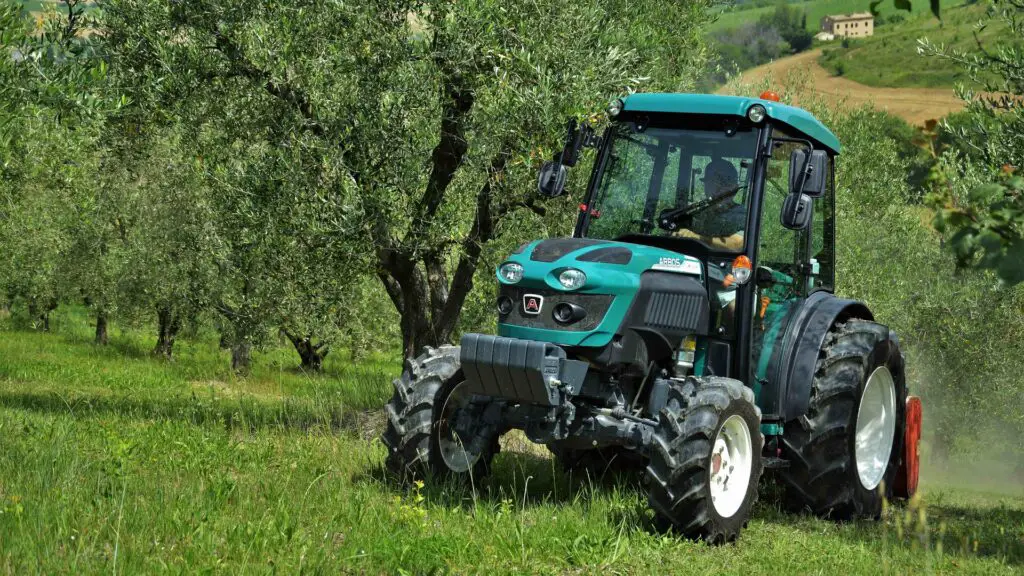
This image is property of img.oemoffhighway.com.
7. Variable rate technology (VRT) in farm machinery
Variable rate technology (VRT) plays a crucial role in optimizing the use of inputs in agriculture. By applying inputs such as fertilizers and pesticides at variable rates according to specific field conditions, farmers can ensure efficient resource utilization and minimize environmental impact.
7.1 Introduction to variable rate technology
Variable rate technology involves the precise application of inputs based on the specific needs of different areas within a field. VRT systems use data from soil sensors, satellite imagery, or historical yield maps to determine the optimal rate of application for each location. By varying the rate of inputs, farmers can address variations in soil fertility, moisture levels, and crop requirements, resulting in cost savings and improved crop performance.
7.2 Benefits of using VRT in agriculture
Using variable rate technology in agriculture offers several benefits. Firstly, it enables accurate and targeted application of inputs, reducing wastage and optimizing resource utilization. By aligning inputs with specific field conditions, farmers can minimize the risk of over or under-application, leading to higher crop yields and improved crop quality. Additionally, VRT allows for precise placement of inputs, ensuring that they are applied only where they are needed, reducing the risk of environmental contamination.
7.3 Examples of VRT in farm machinery
There are various examples of variable rate technology being utilized in farm machinery. For instance, variable rate fertilizer applicators can adjust the rate of fertilizer application based on soil nutrient levels, resulting in efficient nutrient management. Sprayers equipped with VRT systems can vary the rate of pesticide or herbicide application based on weed or pest density, reducing chemical use and minimizing environmental impact. Moreover, seeders with VRT capabilities can adjust seeding rates based on soil characteristics and seed variety, ensuring optimal plant populations and uniform plant spacing.
8. Biotechnology and genetic engineering in farming
Biotechnology and genetic engineering have played a significant role in improving crop production and enhancing plant traits for increased resilience, higher yields, and improved nutritional value. These advancements have had a profound impact on farm machinery by requiring specialized equipment for various biotech applications.
8.1 Role of biotechnology in agriculture
Biotechnology has revolutionized agriculture by allowing scientists to modify the genetic makeup of plants and animals to enhance desirable traits. This includes genetic engineering, gene editing, and other techniques that enable the development of crops with increased resistance to pests, diseases, or environmental stresses. Biotechnology also plays a vital role in the production of genetically modified organisms (GMOs), which have been widely adopted in agriculture to improve crop yield and decrease losses.
8.2 Genetic engineering and its impact on crop production
Genetic engineering has had a significant impact on crop production by introducing specific genes into plants to confer desirable traits. For example, the incorporation of genes from bacteria into crops such as corn and cotton has allowed them to produce natural insecticides, reducing the need for chemical pesticides. Similarly, genetically engineered crops can be made resistant to herbicides, allowing for more effective weed control. These advancements in crop genetics have influenced the design and development of farm machinery to accommodate the unique needs of biotech crops.
8.3 Biotech advancements in farm machinery
Farm machinery has evolved to support the cultivation and management of genetically modified and biotech crops. For instance, sprayers and seeders have been designed to accommodate biotech herbicide-tolerant crops, allowing farmers to effectively control weeds without damaging the crops. Harvesting equipment has also been adapted to handle genetically modified crops, ensuring efficient and cost-effective harvest. Additionally, farm machinery used in tissue culture and plant breeding facilities has become more sophisticated to enable the rapid production and propagation of genetically engineered plant varieties.
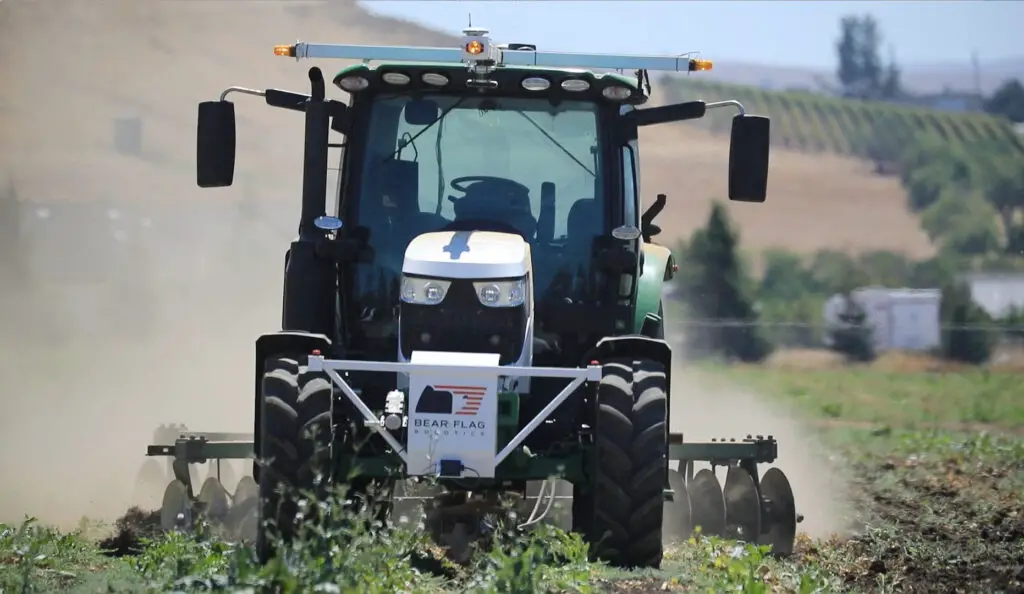
This image is property of static01.nyt.com.
9. Farm automation and smart systems
Farm automation and smart systems are reshaping modern agricultural practices. These technologies enable the automation of farming tasks and the integration of various systems to optimize farm operations.
9.1 Automation technologies in modern farms
Automation technologies in modern farms encompass a wide range of systems and equipment. Automated irrigation systems can monitor soil moisture levels and adjust water application accordingly, ensuring efficient water use. Robotic milking systems have been introduced in dairy farming, allowing for automated and efficient milking of cows. Similarly, automated feeding systems can dispense feed to livestock according to predetermined schedules, minimizing labor requirements and optimizing nutrition. Farm automation improves productivity, reduces labor costs, and enhances farm efficiency.
9.2 Smart systems for efficient farming
Smart systems in agriculture utilize interconnected technologies to enhance farming operations. For example, systems equipped with sensors and weather data can determine optimal planting times based on climatic conditions. Smart sensors installed in farm machinery can collect data on equipment performance and alert farmers about potential maintenance issues. Furthermore, smart systems can integrate data from various sources, such as soil sensors, GPS, and weather stations, to provide farmers with real-time information for decision-making.
9.3 Benefits of farm automation and smart systems
Farm automation and smart systems offer several benefits to farmers. Firstly, they reduce the reliance on manual labor, allowing for the efficient allocation of resources and increased productivity. Secondly, these technologies minimize human error and improve accuracy in tasks such as irrigation, feeding, and milking, resulting in improved crop or livestock performance. Moreover, automation and smart systems enable farmers to access real-time data, enhancing decision-making and optimizing farming practices for better outcomes.
10. Solar-powered and energy-efficient machinery
The integration of solar power and energy-efficient solutions in farm machinery has gained traction in recent years. With a focus on sustainability and reducing reliance on fossil fuels, solar-powered and energy-efficient machinery offer both environmental and economic benefits.
10.1 Advantages of solar-powered farm machinery
Solar-powered farm machinery utilizes the energy of the sun to power various agricultural operations. The use of solar power offers several advantages. Firstly, it reduces reliance on fossil fuels, resulting in reduced greenhouse gas emissions and overall environmental impact. Solar-powered machinery also offers cost savings by reducing fuel consumption and operating costs. Additionally, solar panels can be used to generate electricity for remote farms or power equipment in areas with limited access to the electrical grid.
10.2 Energy-efficient solutions for agricultural practices
Energy-efficient solutions in agricultural practices focus on reducing energy consumption while maintaining or improving productivity. This can include using energy-efficient engines in farm machinery, optimizing equipment design for improved efficiency, and implementing energy management systems to monitor and control energy usage. Energy-efficient practices also extend to crop and livestock management, such as implementing efficient irrigation systems, using energy-efficient lighting in livestock housing, and adopting energy-saving techniques in storage and processing facilities.
10.3 Examples of solar-powered and energy-efficient machinery
There are various examples of solar-powered and energy-efficient machinery being used in agriculture. Solar-powered irrigation systems utilize solar panels to power irrigation pumps, reducing dependence on grid electricity or diesel generators. Energy-efficient tractors and harvesters are equipped with engines that optimize fuel consumption and reduce emissions. Additionally, energy-efficient lighting systems in livestock facilities, such as LED lights, minimize energy use while providing adequate lighting for the animals. The integration of solar power and energy-efficient solutions in farm machinery will continue to grow as sustainable practices become increasingly important in the agricultural sector.
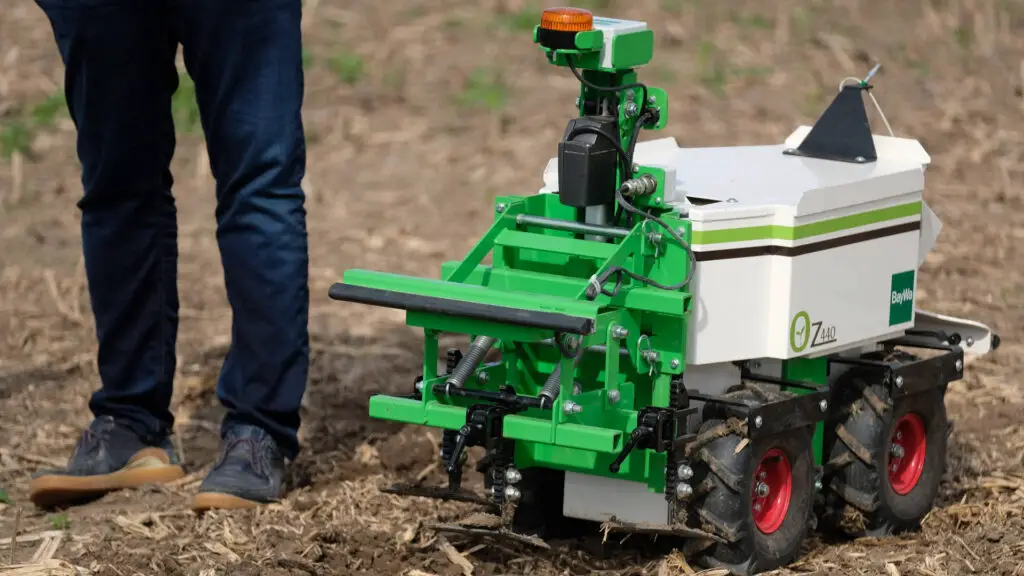
This image is property of undark.org.
This post may contain affiliate links which means I may receive a commission for purchases made through links. Learn more on my Private Policy page.

